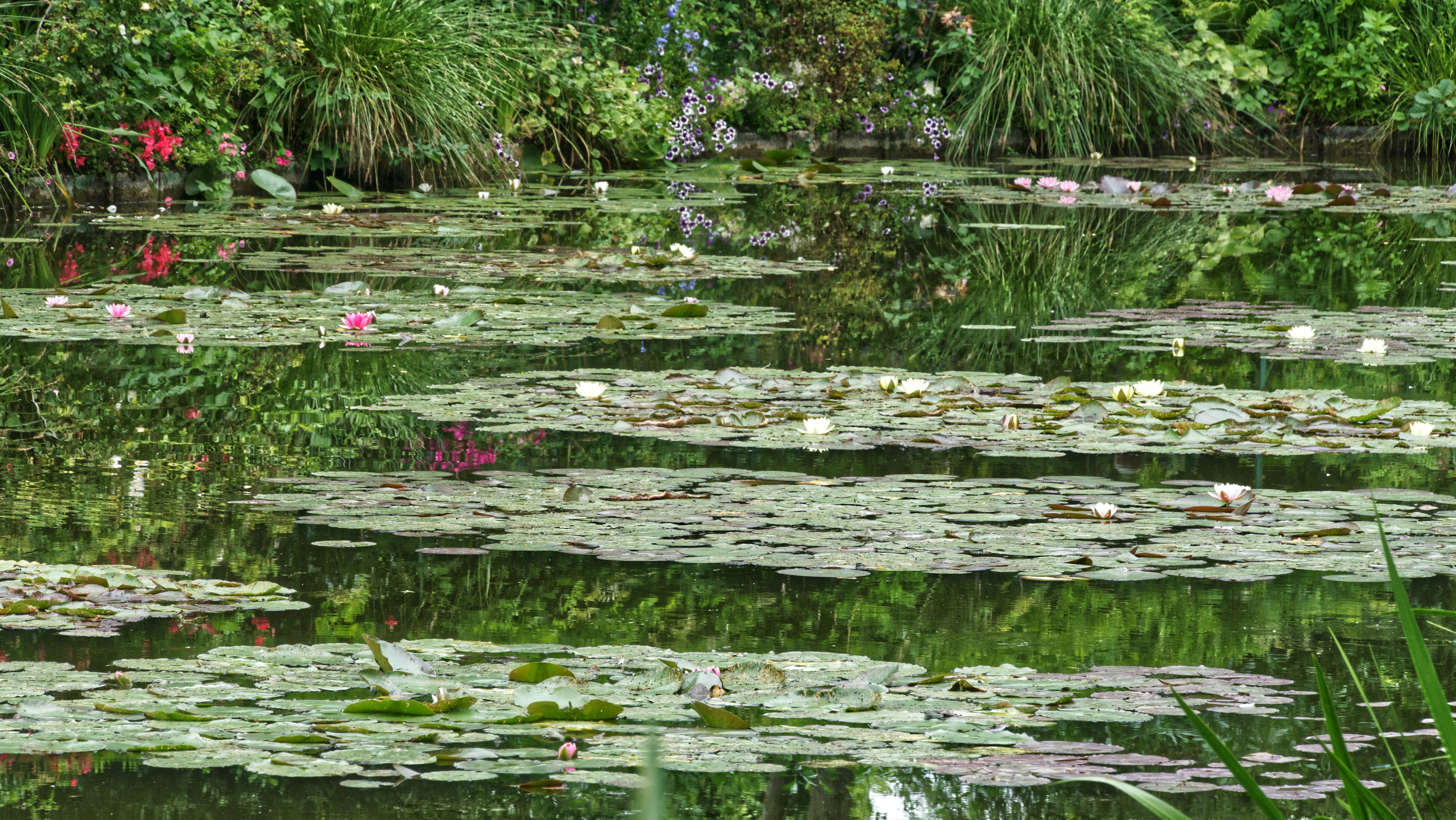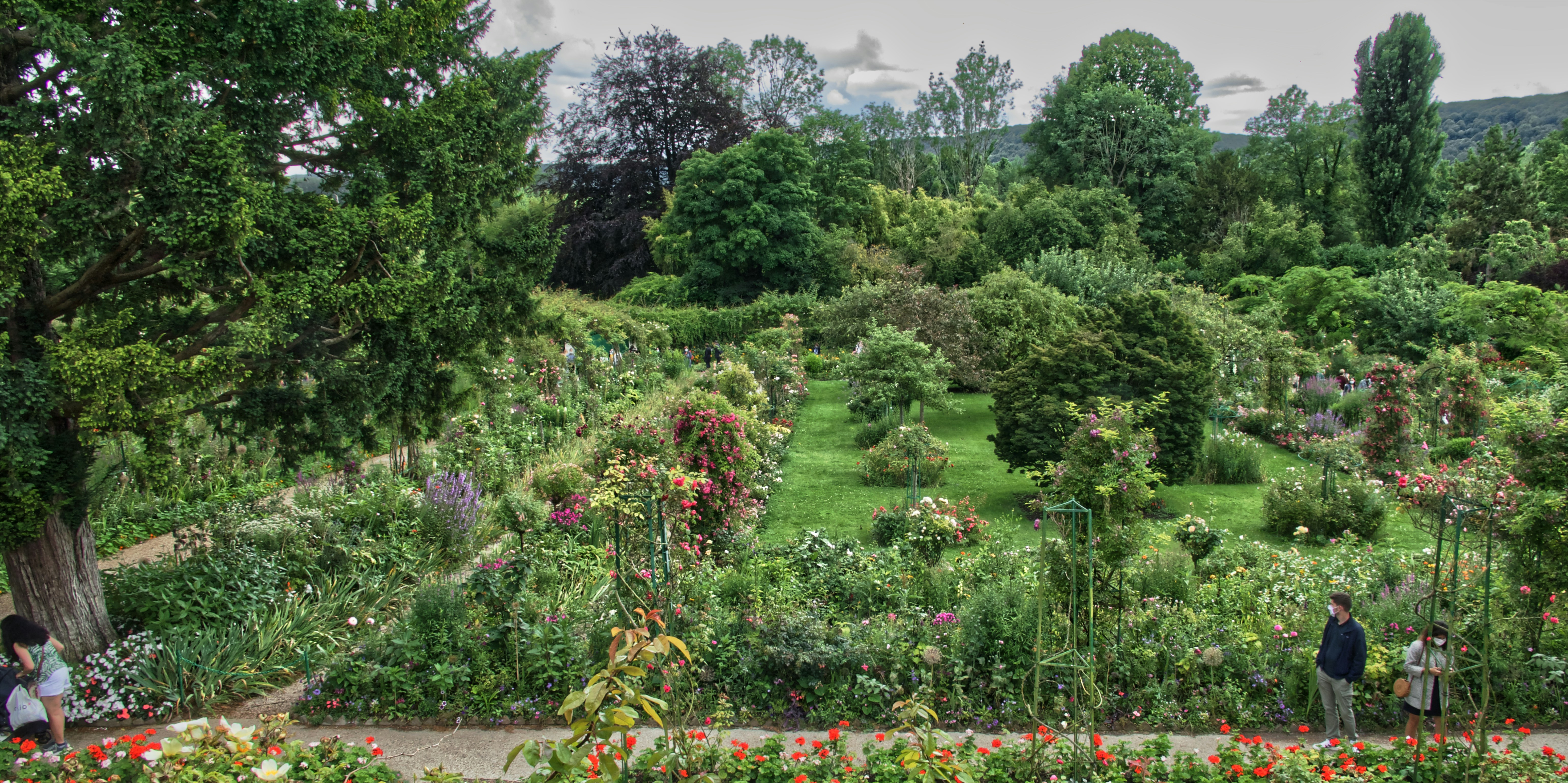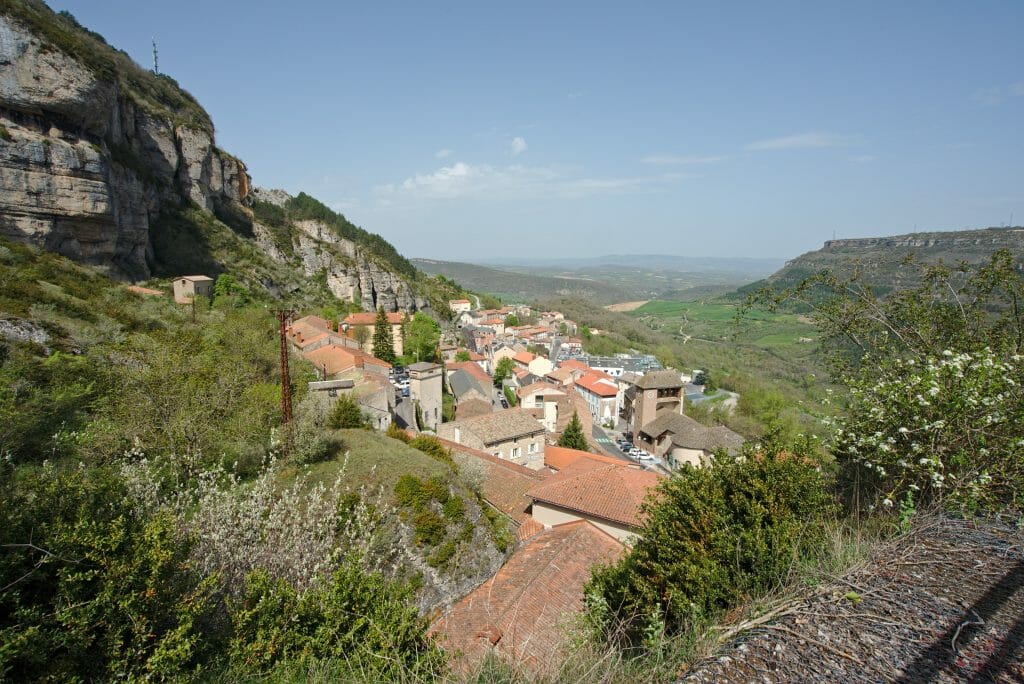Giverny: A canvas of nature and art
In the heart of Normandy, a small village has been transformed into a living masterpiece. Vibrant flowers bloom in carefully curated gardens, their colors as bold and expressive as the brushstrokes of an Impressionist painting. Water lilies float serenely on a tranquil pond, their reflection shimmering in the afternoon light. This enchanting scene is not confined to a canvas but sprawls across the landscape of Giverny, forever immortalized by the vision of one of art's greatest masters.

The Artist's Paradise
Giverny's transformation into an artistic haven was initiated by Claude Monet's arrival in 1883. The quaint Norman village was discovered by the painter during a train journey, its picturesque setting immediately captivating his imagination. A modest house with a sprawling garden was rented, which would later be purchased and expanded to become Monet's home for over four decades.
The gardens of Giverny were not simply admired by Monet; they were meticulously designed and cultivated. Each flower, each tree, each winding path was carefully considered, creating a living palette from which the artist drew endless inspiration. The result is a horticultural masterpiece that continues to enchant visitors to this day.
Things to do in Giverny
A Symphony of Color
As one wanders through Monet's gardens, the senses are overwhelmed by a riot of color and fragrance. The Clos Normand, the flower garden near the house, is a testament to Monet's love of color and his desire to paint outdoors. Flowers of every hue imaginable are planted in long beds, creating a tapestry of blooms that change with the seasons. Climbing roses scramble up metal arches, while nasturtiums carpet the central alley in fiery oranges and yellows.
The famous water garden, inspired by Japanese prints Monet collected, lies across the road. Here, a placid pond is surrounded by weeping willows and bamboo, creating a serene atmosphere that feels worlds away from the bustling flower beds. The iconic Japanese bridge, painted a vivid green, arches gracefully over the water, surrounded by clusters of water lilies – the subject of Monet's most famous series of paintings.
The Artist's Home
Monet's house, a long, pink building with green shutters, has been meticulously restored to its appearance during the artist's lifetime. Inside, visitors are transported to the early 20th century. The bright yellow dining room and blue kitchen, with their gleaming collections of copper pots and blue-and-white Rouen ceramics, offer a glimpse into the domestic life of the Monet family.
The artist's studio, where many of his large water lily canvases were painted, is now used to display reproductions of his works. Standing in this light-filled room, one can almost imagine Monet at his easel, capturing the ever-changing play of light on his beloved garden.
Beyond Monet's World
While Monet's house and gardens are undoubtedly the main draw, the village of Giverny itself is worth exploring. The Impressionist Museum, located just a short walk from Monet's property, houses a collection of works by American Impressionists who were drawn to Giverny by Monet's presence. The village's charming streets are lined with art galleries and cafes, many housed in buildings that would have been familiar to Monet himself.
For those seeking to immerse themselves further in the landscape that inspired Monet, the surrounding countryside offers numerous walking and cycling trails. The hills and valleys of the Seine Valley, with their play of light and shadow, continue to captivate artists and nature lovers alike.
A Living Legacy
Today, Giverny stands as a testament to the enduring power of art to transform a place. The village, once a quiet rural backwater, now welcomes hundreds of thousands of visitors each year, all eager to step into the world of Monet's paintings. Yet despite its popularity, Giverny retains an air of tranquility, particularly in the early morning or late afternoon when the crowds have thinned.
As the sun begins to set, casting long shadows across the water garden, it's easy to understand why Monet was so captivated by this place. The changing light, the gentle rustle of leaves, the soft splash of water – all combine to create a sensory experience that feels both timeless and ephemeral.

Giverny is more than just a pilgrimage site for art lovers; it's a place where art and nature intertwine, where the boundaries between the real and the imagined blur. It's a living canvas that continues to inspire and delight, inviting each visitor to see the world through an Impressionist's eyes.
As one leaves Giverny, the memories of its beauty linger, much like the afterimage of a brightly colored scene. The village serves as a reminder of the power of vision – both artistic and horticultural – to create lasting beauty. For those seeking further artistic inspiration, a visit to Paris, the cradle of Impressionism, might be the perfect next stop on a French art tour.
Michelin Restaurants in Giverny
Show all
La Musardière
In the heart of the quaint little town of Giverny, near Claude Monet’s house and the Impressionist Museum, this establishment serves modern, heart-warming fare in a friendly, contemporary bistro setting. Delightful sunny terrace when the weather permits and a few guestrooms for overnight stays.
Giverny - FRANCE

Le Jardin des Plumes
A short walk from Claude Monet’s house, this half-timbered Anglo-Norman 1912 edifice extends an invitation to relax and enjoy the good things of life. The tasteful interior mixes Art deco features (worn blue and white floor tiles, peacock blue walls) with 1960’s white leather armchairs and glass and rosewood tables, while the lovely patio is flanked by a delightful, wooded garden. Normandy born chef, David Gallienne, who trained at the Manoir du Lys, continues to work with some of his former suppliers from Orne and Dieppe fishermen, whilst sourcing new ones. His inventive recipes feature unorthodox flavours and textures. The chef has opened a nearby guesthouse for overnight stays and a delicatessen in Vernon.
Giverny - FRANCE
Best Restaurants in Giverny
Show all
L'Ecrin aux Epices ( terroir réunionnais et normand)
Dine in • Takeaway • Breakfast • Lunch • Dinner • Vegetarian Friendly • Wheelchair-accessible entrance
Bois-Jérôme-Saint-Ouen - FRANCE

Brasserie de l'Apocalypse
Takeaway • Wheelchair-accessible entrance
Bois-Jérôme-Saint-Ouen - FRANCE

Le fidèle Freneuse
Dine in • Takeaway • Lunch • Dinner • Wheelchair-accessible entrance
Freneuse - FRANCE

Smash Gourmet
Dine in • Takeaway • Delivery • Dinner • Wheelchair-accessible entrance
Vernon - FRANCE

Just thaï Bonnieres sur Seine
Dine in • Takeaway • Delivery • Lunch • Dinner
Bonnières-sur-Seine - FRANCE

Les petits plats de pauline - Parking Centrakor Vernon
Takeaway • Lunch • Wheelchair-accessible entrance
Vernon - FRANCE
Related articles
Show all
The breathtaking city of Mougins
Olive groves, cypress trees, and lush green forests characterize the commune of Mougins. This little town sits in the district of Grasse in the wider Cannes region and is as pretty as they come. As far as medieval villages go, Mougins has it all, including the desirable hilltop location and ancient houses. The town has seen its fair share of historical celebrities too. Picasso, Cocteau, and Paul Eluard have all graced Mougins with their presence. Today the area draws travelers from the heart of Cannes out into the countryside to enjoy a taste of rural France.
Mougins - FRANCE

The top 15 things to do in Obernai
Nestled in the heart of Alsace, a charming town awaits discovery. With its timber-framed houses, cobblestone streets, and rich history, this gem of eastern France offers visitors a unique blend of cultural experiences, culinary delights, and natural beauty. From exploring medieval architecture to savoring local wines, a myriad of activities can be enjoyed in this picturesque Alsatian destination.
Obernai - FRANCE

The 15 best things to do in Roquefort-sur-Soulzon
Tucked away in the rugged landscape of southern France, a small village stands as a testament to centuries of culinary tradition and natural wonder. Here, beneath limestone cliffs and winding streets, visitors can uncover a world where cheese reigns supreme and ancient caves hold secrets passed down through generations. This hidden gem offers a unique blend of gastronomic delights, stunning scenery, and rich history that can be savored by all who venture to explore its charms.
Millau - FRANCE

Stunning places to visit in France
France is the most visited country in the world! The "Land of Love" certainly has its work cut out to impress worldly travelers, and it does not disappoint.
FRANCE

The 15 best things to do in Grenoble
Nestled in the heart of the French Alps, a city of innovation and natural beauty awaits discovery. Where cutting-edge technology meets centuries of history, and where urban sophistication blends seamlessly with alpine adventures, visitors can find themselves immersed in a unique tapestry of experiences. From world-class museums to breathtaking mountain vistas, this alpine gem offers a wealth of activities for every type of traveler.
Grenoble - FRANCE

Best 15 things to do in Béziers
The sun-drenched landscapes of southern France beckon travelers with promises of rich history, exquisite cuisine, and breathtaking vistas. Amidst this enchanting region, a hidden gem awaits discovery. With its winding medieval streets, impressive architecture, and vibrant local culture, this charming city offers a wealth of experiences for the curious explorer. From ancient Roman ruins to world-class wine tastings, a journey through this captivating destination promises to be an unforgettable adventure.
Béziers - FRANCE



 Home
Home Wishlist
Wishlist